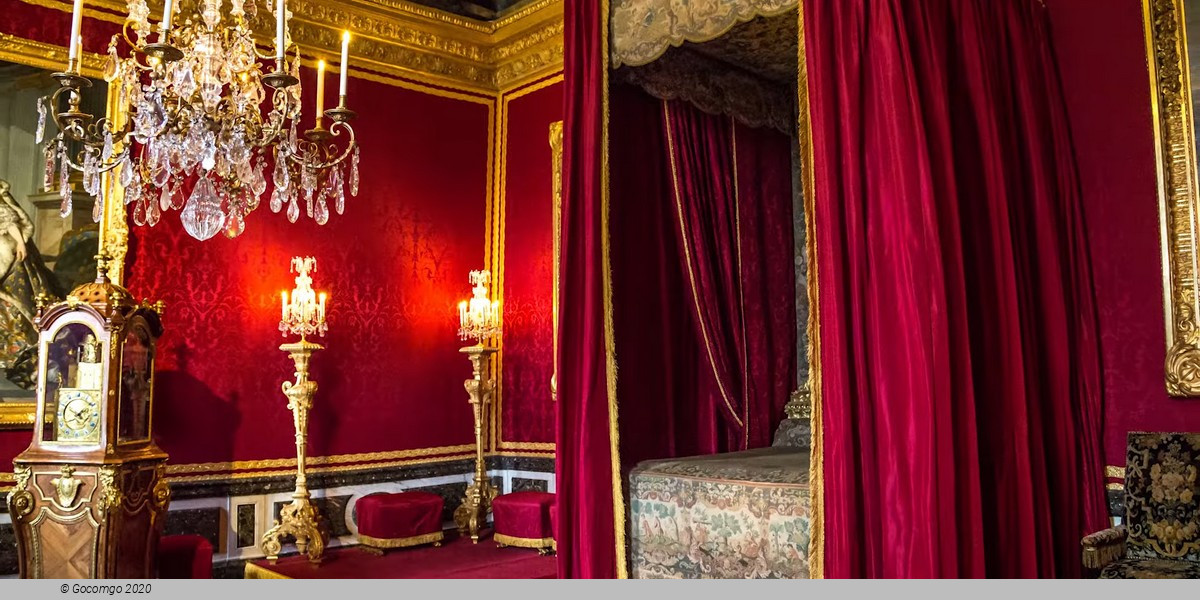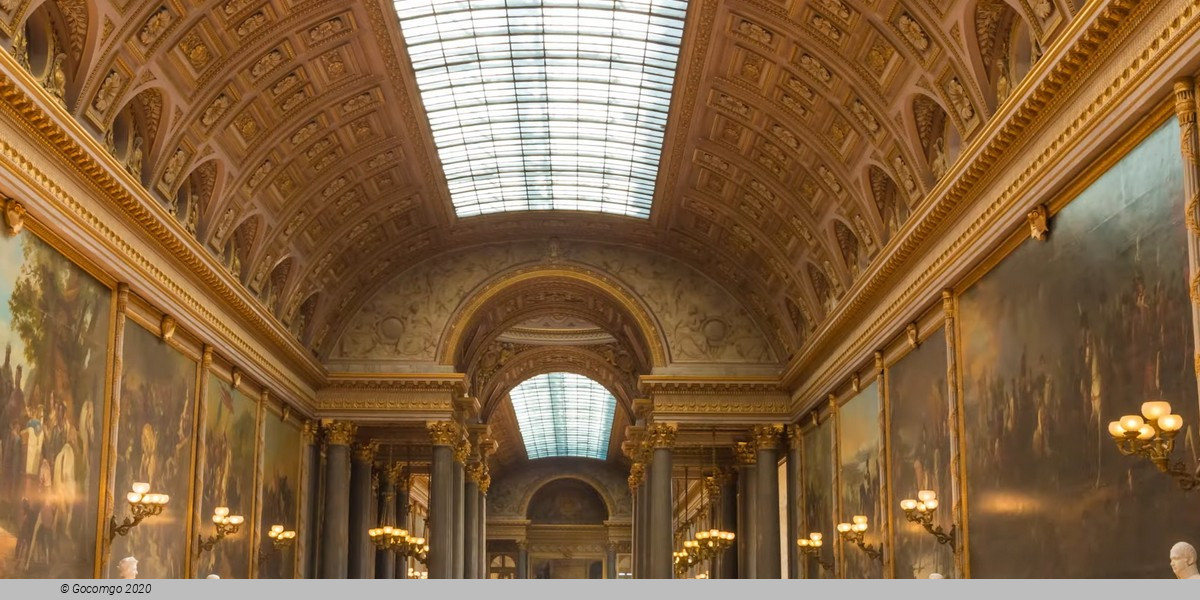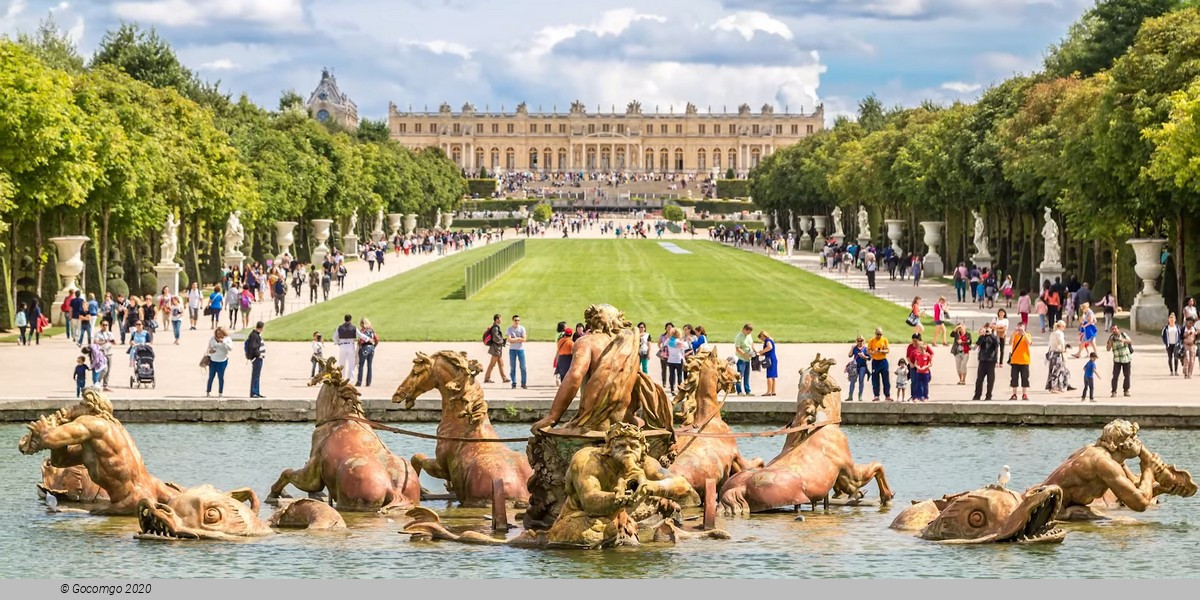Palace of Versailles Tickets & Tours
Discover the one of the most famous palaces worldwide, the World Heritage Site by UNESCO - the Palace of Versailles, with Skip-the-Line Entry Tickets from € 20.
Tickets1 result

Admire this amazing UNESCO World Heritage Site and let it take your breath away as you explore the Hall of Mirrors, Grand Apartments and more with this Skip-the-Line entry ticket.
- All-day ticket
- Free cancellation
- Skip The Line
- Wheelchair access
Gallery



About
Travelers are not only drawn to see Versailles's magnificent architecture and its endless gardens, but to discover a palace that was so significant during the history of France. Boasting the enchanting architecture of the 18th century, 250 acres of landscape, and stunning artwork, this castle is a stellar example of the lives French royalty once lived.
Opening Times:
Palace
| Tuesday - Sunday | 09:30-17:30 |
| Monday | Closed |
| 1 January, 25 December | Closed |
Estate of Trianon
| Tuesday - Sunday | 12:00-17:30 |
| Monday | Closed |
| 1 January, 25 December | Closed |
Gardens
| Monday - Sunday | 08.00 - 18.00 |
Park
| Monday - Sunday | 08.00 - 18.00 |
Highlights and Description
The Palace of Versailles was the principal royal residence of France from 1682, under Louis XIV, until the start of the French Revolution in 1789, under Louis XVI. The palace is now a historical monument and UNESCO World Heritage site, notable especially for the ceremonial Hall of Mirrors, the jewel-like Royal Opera, and the royal apartments; for the more intimate royal residences, the Grand Trianon and Petit Trianon located within the park; the small rustic Hameau (Hamlet) created for Marie Antoinette; and the vast Gardens of Versailles with fountains, canals, and geometric flower beds and groves, laid out by André le Nôtre.
The Palace
In 1789, the French Revolution forced Louis XVI to leave Versailles for Paris. The Palace would never again be a royal residence and a new role was assigned to it in the 19th century, when it became the Museum of the History of France in 1837 by order of King Louis-Philippe, who came to the throne in 1830. The rooms of the Palace were then devoted to housing new collections of paintings and sculptures representing great figures and important events that had marked the History of France. These collections continued to be expanded until the early 20th century at which time, under the influence of its most eminent curator, Pierre de Nolhac, the Palace rediscovered its historical role when the whole central part was restored to the appearance it had had as a royal residence during the Ancien Régime.
Today the Palace contains 2,300 rooms spread over 63,154 m2.
The Gardens
Visitors looking through the central window in the Hall of Mirrors will see the Grande Perspective stretching away towards the horizon from the Water Parterre. This unique east-west perspective originally dates from before the reign of Louis XIV, but it was developed and extended by the gardener André Le Nôtre, who widened the Royal Way and dug the Grand Canal.
In 1661 Louis XIV entrusted André Le Nôtre with the creation and renovation of the gardens of Versailles, which he considered just as important as the Palace. Work on the gardens was started at the same time as the work on the palace and lasted for 40 or so years. During this time André Le Nôtre collaborated with the likes of Jean-Baptiste Colbert: Jean-Baptiste Colbert (1619-1683) was one of Louis XIV’s most important ministers. He succeeded Mazarin in 1661… Find out more, Superintendant of Buildings to the King from 1664 to 1683, who managed the project, and Charles Le Brun: Charles Le Brun (1619-1690) was First Painter to King Louis XIV. He is famous for the Hall of Mirrors… Find out more, who was made First Painter to the King in January 1664 and provided the drawings for a large number of the statues and fountains. Last but not least, each project was reviewed by the King himself, who was keen to see “every detail”. Not long after, the architect Jules Hardouin-Mansart, having been made First Architect to the King and Superintendant of Buildings, built the Orangery and simplified the outlines of the Park, in particular by modifying or opening up some of the groves.
The Park
Beyond the gardens lies the Park, which extends the gardens seamlessly thanks to the creation of two large water features: the Grand Canal and the Lake of the Swiss Guards.
The Park covers approximately 800 hectares, criss-crossed by straight paths marking out wooded areas and agricultural fields, and is surrounded by a wall pierced by gates. Although some sections of land were lost during the Revolution and the 19th century, the Park’s perimeter nevertheless retained its original outline, and it continues to surround the estate of Versailles with the wealth of greenery it has always known.
The Estate of Trianon
In an attempt to gain some brief respite from courtly etiquette, the kings of Versailles built themselves more intimate spaces close to the main palace. Adjoining the Petit Parc, the estate of Trianon is home to the Grand Trianon and Petit Trianon palaces, as well as the Queen’s Hamlet and a variety of ornamental gardens.
Construction on the estate began under Louis XIV, who had the Grand Trianon Palace built at the far end of the northern branch of the Grand Canal. The estate is perhaps most closely associated with Queen Marie-Antoinette. The wife of Louis XVI regularly sought refuge at the Petit Trianon, where she commissioned marvellous landscaped gardens centred around a hamlet of cottages built in the rustic style then in vogue. Designed for more intimate moments, this royal estate contains architectural gems and magnificent gardens whose diversity and ornamentation give it a unique charm.

